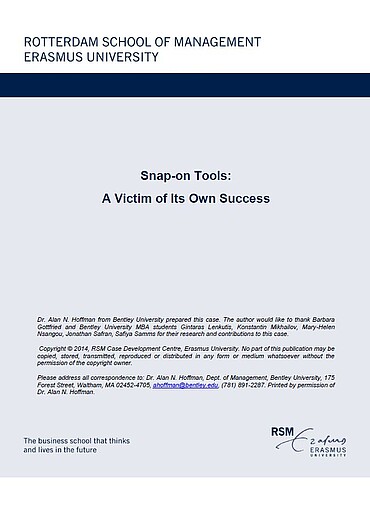Abstract
In the past 93 years, Snap-on Tools had firmly established itself as an innovative premium tool manufacturer serving the automotive industry. In recent years, Snap-on Tools started to expand its product lines to engineering industries including aerospace, aviation, and oil & gas. It also began providing technical education to increase the skilled labor base in the US – its largest market constituting 65% of all revenue. Snap-on feared that its overdependence on the US market could make its business and operations vulnerable to country-specific trends as well as increase the company's exposure to local factors such as severe weather conditions, labor strikes, or changes in regulations. As repair industries developed in emerging markets, Snap-on sought to expand to these rapidly growing economies and participate in the building of a repair infrastructure. In 2012, Snap-on opened its fourth manufacturing facility in Kunshan, China, where it manufactured undercar equipment, an important, high-value product line for the local market. Despite this, however, Snap-on’s growth was not rapid enough to build facilities and generate products that could keep pace with opportunities in China, exposing it to the possible threat that a fast-moving competitor could move in and replace it.
Citation Note
Based on published sources; 18 pages.
Follow the 'handle' link to access the Case Study on RePub.
For EUR staff members: the Teaching Note is available on request, you can contact us at rsm.nl/cdc/contact/
For external users: follow the link to purchase the Case Study and the Teaching Note.
